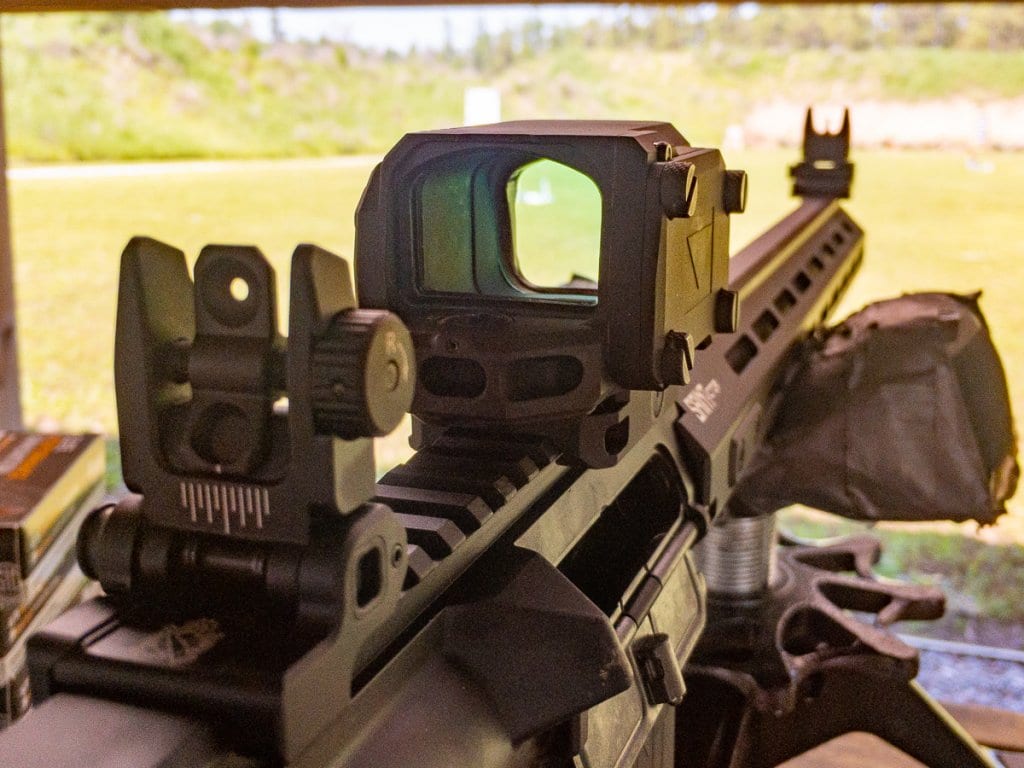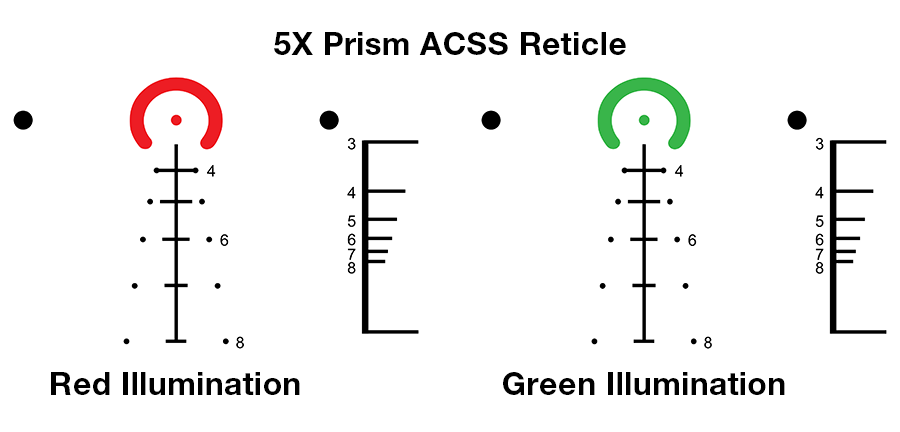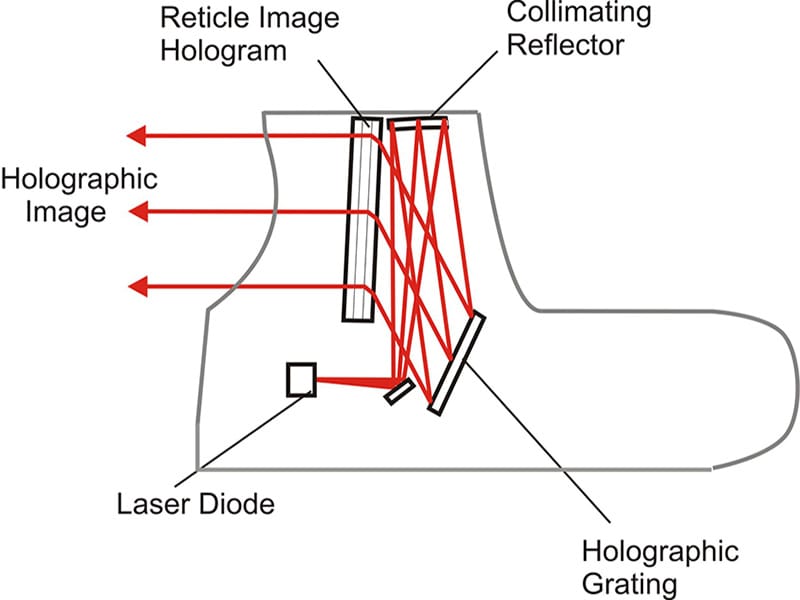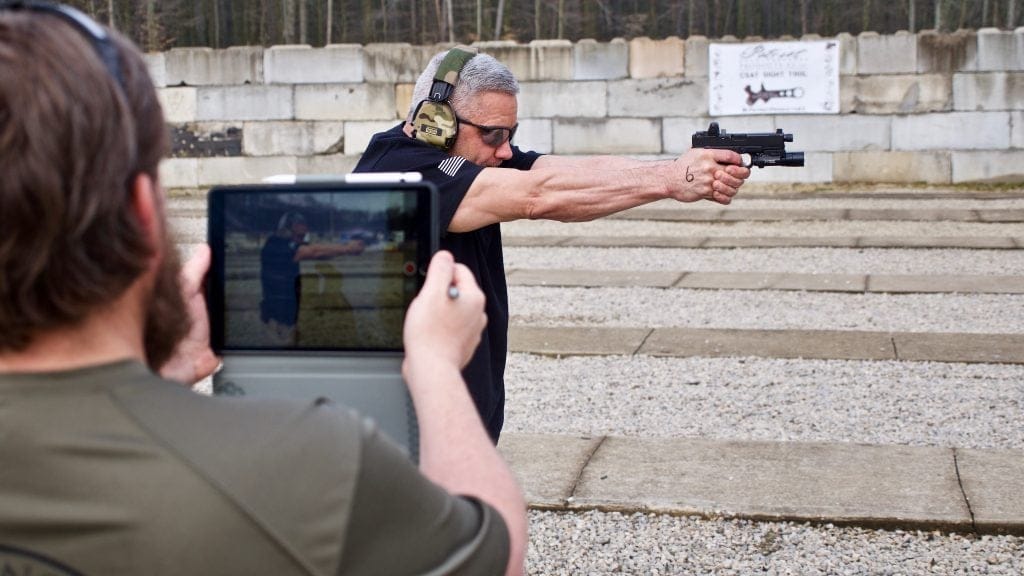Red Dot Sights have been accepted by shooters as a standard long gun accessory for a long time now. Since the early 2000s, they have been steadily gaining in popularity for use on pistols. Optics technology is ever-advancing, so the conversation continues to evolve about what kind of sights are best to use in different situations. If you’re trying to decide whether or not to add a Red Dot Sight to your pistol, it is important to know the different types and how they each function. Here, we discuss the basics of Red Dot Sight (RDS) varieties and applications.
Red Dot Sight Terminology
The term “Red Dot Sight” covers a wide range of optics. Generally speaking, it (or the acronym RDS) refers to any kind of sight that displays an illuminated shape as the aiming point. The shape can come in various colors and shapes. Often shooters use a dot in their RDS, but it can also be displayed as a chevron, cross-hairs, etc.
Other terms you might run into:
- Red Dot Scope: this means the same as “Red Dot Sight.”
- Eye relief: is the distance between your eye and the ocular lens when looking through the scope.
- Reticle: the crosshair or aiming point of your scope
- Focal Plane: This is where the reticle is installed. Red dot sights use a single focal plane, and manufacturers offer two options for placement: First (FFP) and Second (SFP).
- An FFP (First Focal Plane) dot is placed closer to the objective lens. You might hear this referred to as a front focal plane dot.
- An SFP (Second Focal Plane) dot is placed closer to the ocular lens. This is sometimes also called a rear focal plane.
- Parallax: is the relative movement between the reticle and the target as the eye is moved behind the optic. A true RDS will have almost no parallax, particularly compared to a typical magnified rifle scope.

How They Work
Red dot sights don’t project a red dot onto your target; that’s what laser sights do. Instead, the dot is superimposed over the target in the window of the sight. The dot inside the window simplifies target acquisition because the shooter only has to process a single focal plane. With traditional sights, the shooter must first transition their focus from the target back to their sights, then align the front sight and each side of the rear notch with the target, forcing the shooter to transition focus and attention between three different focal planes.
In simplest terms, with a red dot sight you only have to worry about one thing and one plane; with traditional sights, you have to juggle three.
Categories of Red Dot Sights
There are three categories of Red Dot Sights: the reflex sight, prism sight, and holographic sight.
Reflex Sights
Reflex sights use a semi-reflective lens that functions as a mirror to reflect a colored LED dot onto the lens. The shooter sees the dot while looking through the lens, which aids in target acquisition and aim placement.

These sights are virtually parallax free, so if there is a change in head position, cheek weld, or eye relief, there isn’t a corresponding change in aim or impact. Users can choose the reticle (or dot) size, but be aware that even though smaller dots offer greater accuracy, they can be more difficult to acquire. Reflex sights are reported to cause less eye fatigue.

Prism Sights
These sights use a prism to focus the light in the window. They are less forgiving on eye relief than the reflex sight, which requires your eye to be in the same spot each time. Most prism sights have an etched reticle, so if the battery malfunctions you’ll still be able to use it to focus in on your target. The fixed-power magnification (usually up to 3.5X) makes them unsuitable for long-range shooting for some shooters, though this is, of course, dependent upon the individual shooter, the weapon, and how one defines “long-range.” Some have posited that prism sights are best suited for survival situations since they can be used without battery power; others dismiss this notion, given the successful use of prism sights on multiple platforms for many reasons (including combat use).
Here are a couple of examples of the reticles in prism sights.

Holographic Sights
These sights use a laser diode that projects onto the sight window by use of synthetic radar and holography. A synthetic radar uses microwaves to form a picture and a holograph reproduces an object by recording how light interacts with it.

Holographic sights display the three-dimensional reticle in the window, instead of reflecting it onto the lens like a reflex sight. When the sight is mounted to the firearm, the projected reticle stays in alignment with the weapon barrel. So the shooter is more likely to hit the target, even when looking through the sight at an angle.
These sights have a shorter battery life compared to other electronic sights, but they can still last several months. Similar to reflex sights, holographic sights are nearly parallax free. Holograph sights are suited for combat situations.

Pros and Cons of Red Dot Sights
Advantages
Red dot sights are known to improve the speed of target acquisition, as well as accuracy in shot placement. This is largely due to the fact that with a red dot sight the shooter is able to focus on the target instead of transitioning focus between the target and the sight. The image below from recoilweb.com demonstrates the difference in focus between a red dot sight and a traditional iron sight.

Another advantage to the red dot sight is the potential for heightened situational awareness. If your RDS isn’t magnified you can keep both of your eyes open more easily, which means you have a greater field of view (and thus better-maintained peripheral vision). With your eyes open, you can also move from target to target more easily. Shooting while moving is easier, too. Some say that one-handed manipulation is easier with an RDS.
Compared to iron sights, night or low-light shooting is easier with red dot sights. Even so, target identification can still be an issue in low-light situations, so be sure to adjust the brightness of your dot so that it doesn’t block out the target.
Finally, red dot sights are easier on the eyes. Individuals with poor eyesight report improved distance shooting while using them. The eye relief is more forgiving, and older people indicate that green dots are especially good at helping them shoot more accurately at longer distances.
Disadvantages
Most of the disadvantages are mechanical in nature. The glass can break, or the battery might fail. You might lose your zero. Debris or water might block the LED, as described in the Water is Wet, Red Dots Break article by Dave Merrill at Recoil. If you plan to use a red dot sight with a pistol, plan on extensive training so that you develop a natural reflex in your presentation. You should train with the goal of quickly obtaining a perfect presentation (remembering that practice doesn’t make perfect, perfect practice makes perfect).
Before You Buy a Red Dot Sight
There are a lot of things to consider before purchasing a red dot sight. What features are you looking for? How do you intend to use it? Here are a few things to think about.
Reticle
What kind of shape do you want? Do you want a dot, or do you prefer crosshairs or other reticle options? What size do you want the dot, or reticle, to be? Small dots can help with improved shooting accuracy, but they can be hard to find in bright light. On the flip side, larger dots are easier to see. However if they are too big they can cover up your target, especially at long distances.
Window size is also a consideration. Larger windows can make it easier to see the dot, but perhaps you prefer a tighter field of view to aim with.
Window shape can also influence the efficiency of your Red Dot Sight. The human brain is quite good at centering a round dot inside a round tube this leads to increased speed and precision.
Durability
Depending on the application of your RDS you may want to spend some time researching sights that are more durable. Keep in mind that the size of the caliber may not have the most impact on durability. A relatively mild recoiling 9mm handgun may induce much more stress on the sight than the recoil of a more powerful .308 rifle. Why? Because most handgun-mounted Red Dots are mounted on the pistol’s slide, which reciprocates.
Battery
You should take some time to evaluate the battery requirements of the different red dot sights that you are looking at. Do you need one that automatically shuts off after a period of non-use? Does the entire optic need to be removed from the firearm when you change the battery? If so, you will have to zero it in after each battery change. How easy will it be to obtain replacement batteries?
Settings
Red dot sights come with various adjustable settings. Do you want to be able to manually adjust the brightness, or do you want it to automatically adjust? If you choose a manually adjusted RDS, would you be able to adjust it during high-stress situations? Also, how difficult or easy is it to zero in the red dot?
Mount
What kind of firearm are you planning to mount your new RDS to? A hand-gun sized sight can work on a rifle, but the dot will be smaller and the battery life will be shorter. Do you want short or tall optic? Some shooters prefer the shorter type because they find it easier to put the dot on the target. However, other shooters prefer taller optics with larger windows.
Will your RDS share space with other accessories? Make sure it fits the space available. Check to see if the sight’s batteries are compatible with other accessories you may be using.
Finally, when making a choice about which red dot sight to purchase for your firearm, make sure to get a mounting system that matches it. Do you want a frame mount, or do you want it mounted to your slide? Slide mounts for pistols have changed over the years in response to plenty of obstacles. You can read about such developments in Paul Carlson’s article, Slide Mounted Red Dot Obstacles (and Solutions.)
RDS systems from various manufacturers are very different, and its best to make sure you get the appropriate mounting system. If you have your slide milled by a craftsman, bring your RDS so that he can mill it custom to your optic.



Pingback: Night sights are not the answer - The Mag Life()
Pingback: New Red Dot Optic Mount Available From Reptilia | Breach Bang Clear()
Pingback: FN's New 509 Tactical Supressor & Red Dot Ready Pistol | Breach Bang Clear()
Pingback: CUSTOM GLOCK 19X DIVISION STYLE: THE “PRIMARY SECONDARY” – Caelum Exteriores()
Pingback: Red Dot Sights: The Mag Life Holosun 507c | Big Bird Review()
Pingback: The Reality of a Red Dot Sight - The Mag Life Insights()
Pingback: Sig Romeo-MSR Tortured, Fried, Frozen, and Shot. – Hunting USA()
Pingback: Connect the Dots - A Red dot sight for your pistol - Incognito Wear IX()
Pingback: Do You Need a Red Dot Sight on your Carry Pistol?()
Pingback: A Hybrid P365 - the Best of Both Best Worlds - The Mag Life()
Pingback: Review: Holosun 509T Red Dot Open Reflex Sight - The Mag Life()
Pingback: Review: Holosun 509T Red Dot Open Reflex Sight – Hunting USA()